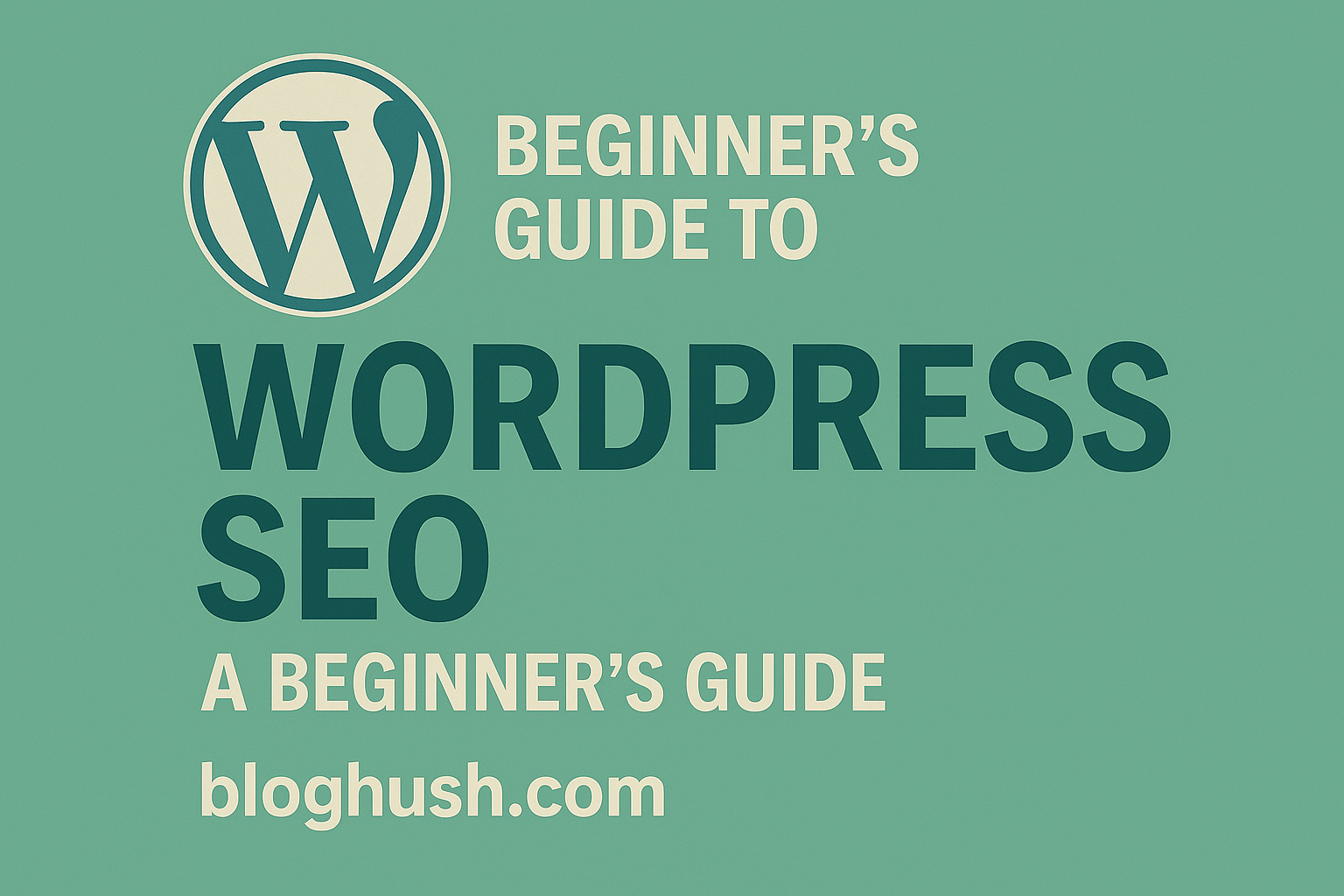SEO (Search Engine Optimization) might sound complicated, but with WordPress, it’s surprisingly manageable—even if you’re just starting out. At BlogHush.com, I’m here to break down WordPress SEO into simple, actionable steps. With over 15 years of experience in WordPress and SEO, I’ve helped countless beginners, small business owners, and bloggers improve their search rankings. Whether you’re sharing gardening tips, business advice, or personal stories, this guide will help you get your WordPress blog noticed on Google in 2025. Let’s get started!
Why WordPress SEO Matters for Your Blog
SEO helps your WordPress blog rank higher on search engines like Google, making it easier for readers to find you. For example, if you blog about gardening, ranking for “best gardening tips” can bring targeted visitors to your site. WordPress powers over 40% of websites, according to W3Techs, and its SEO-friendly structure makes it a great platform to optimize for search engines.
Step-by-Step Guide to WordPress SEO
Step 1: Install an SEO Plugin
- In your WordPress dashboard, navigate to Plugins > Add New.
- Search for “Rank Math,” a free and powerful SEO plugin.
- Click “Install” and then “Activate.”
- Follow Rank Math’s setup wizard to configure basic settings (e.g., connect to Google Search Console).
Insert Image: Flowchart of WordPress SEO steps.
Step 2: Research Keywords for Your Blog
- Use a free tool like Google Keyword Planner to find keywords your audience searches (e.g., “gardening tips,” “beginner gardening”).
- Aim for keywords with 500–2,000 searches/month and low competition.
- Create a list of 5–10 keywords to target in your posts.
Step 3: Optimize Your Blog Posts
- When writing a post (Posts > Add New), add your keyword to the title (e.g., “Top 10 Beginner Gardening Tips”).
- Include the keyword in the first paragraph, a few headers, and throughout the content naturally.
- Use Rank Math’s “SEO” tab to add a meta description (e.g., “Discover the top 10 beginner gardening tips to start your garden in 2025!”).
- Add alt text to images (e.g., “beginner gardening tools on soil”).
Step 4: Set Up SEO-Friendly Permalinks
- Access Settings > Permalinks.
- Choose the “Post name” option for clean, keyword-friendly URLs (e.g., yourdomain.com/beginner-gardening-tips).
- Save changes to apply the new structure.
Step 5: Improve Your Blog’s Speed
- Install a caching plugin like WP Fastest Cache (free) to speed up load times.
- Compress images before uploading (use a tool like TinyPNG).
- Choose a lightweight theme like Astra, as mentioned in our Best Free WordPress Themes Guide.
Step 6: Submit Your Sitemap to Google
- Rank Math automatically generates a sitemap at yourdomain.com/sitemap_index.xml.
- Sign into Google Search Console, go to “Sitemaps,” and submit the URL.
- This helps Google index your blog faster, improving your rankings.
Additional WordPress SEO Tips
- Create Quality Content: Write detailed, helpful posts (1,500+ words) that answer your readers’ questions.
- Use Internal Links: Link to other posts on your blog (e.g., link to How to Start a WordPress Blog).
- Monitor Progress: Use Google Search Console to track your rankings and clicks over time.
What’s Next?
You’ve laid the foundation for WordPress SEO—awesome work! Next, explore advanced strategies like schema markup (see our guide on Advanced WordPress SEO) or add plugins to enhance your blog’s functionality (check out Top 5 Free WordPress Plugins). Stay tuned to BlogHush.com for more SEO tips!

Leave a Reply